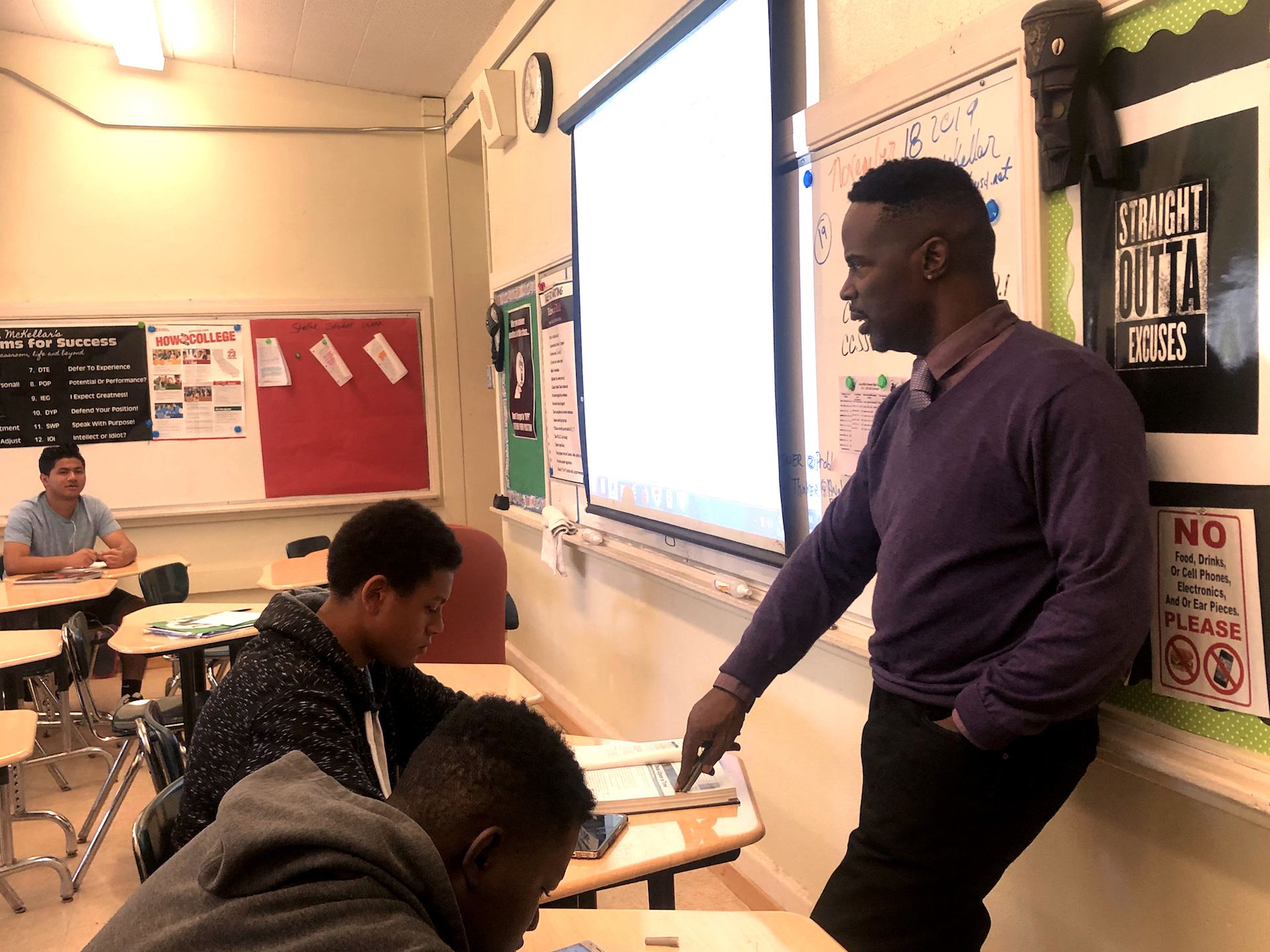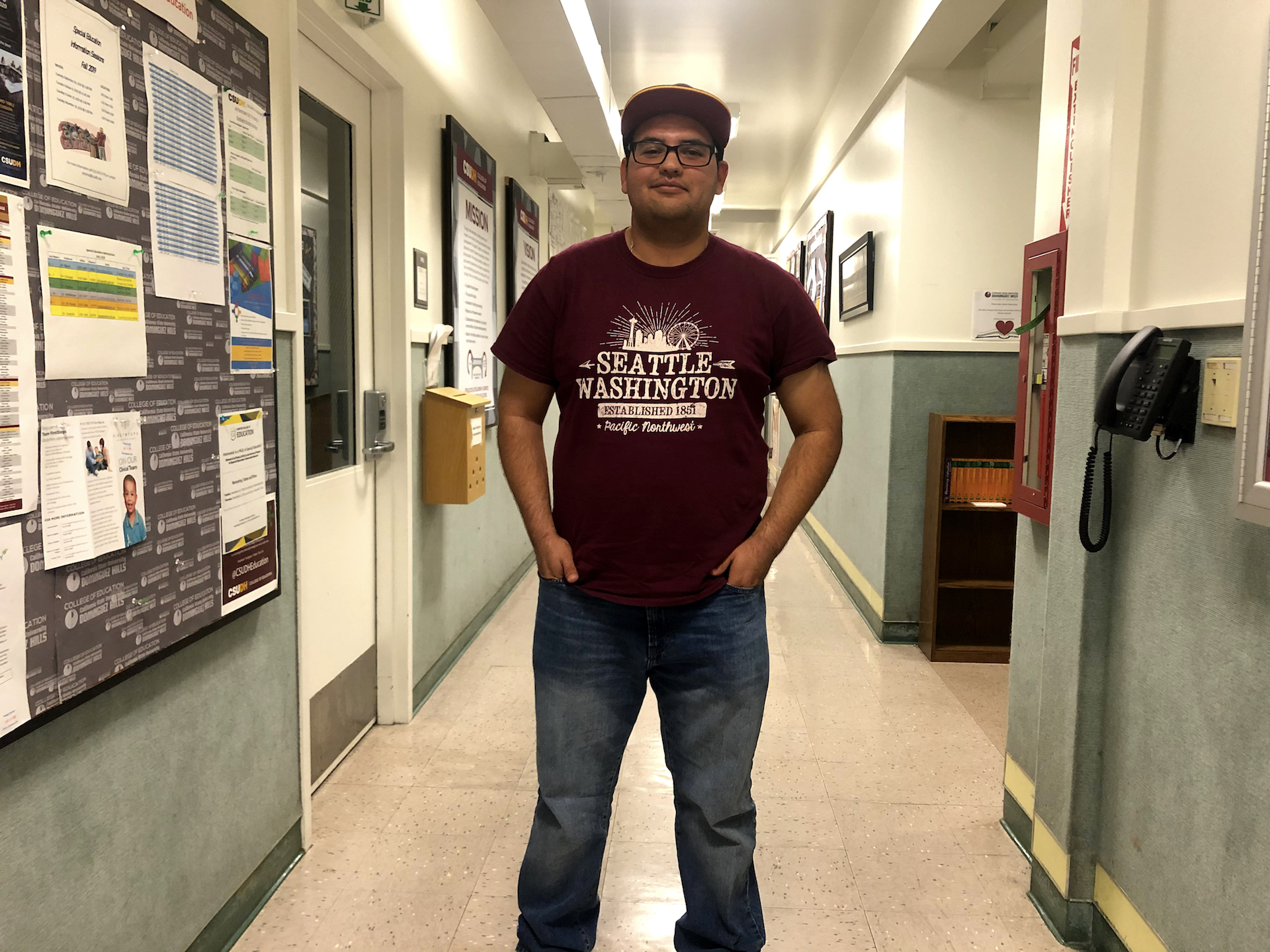“Why drama?” McKellar asks.
“When you win a lot of money, it causes a lot of controversy,” she says.
“Mo’ money, mo’ problems. Who said it?” McKellar asks.
There’s some murmuring. It sounds familiar, but these kids weren’t around in the ’90s. “It’s … a rapper?” one student ventures.
“Wait,” McKellar says, launching into a pretty spot-on impression. “Uh huh, uh huh, baby baby.” The students laugh.
“Biggie Smalls!” a student says.
McKellar nods. “Notorious B.I.G. But he also says we can’t expect to change the world until we do what? Change who? Change yourself.”
He looks pleased with himself as the students pair up and dive into the assignment. “I’m like Batman,” he says. “I use every trick in my utility belt to get a kid to buy into education.”
Role Models in the Classroom
For these students, having a teacher of color like McKellar — who has high expectations, can relate to their experiences and serve as a role model — could make a big difference. When students of color have teachers of color, there’s evidence they learn more, finish high school at higher rates and are more likely to go to college. For instance, one study found having at least one black teacher from third to fifth grade cut the high school dropout rate in half for black boys.
But the number of teachers of color in California isn’t keeping pace with the diversity of its student body.




